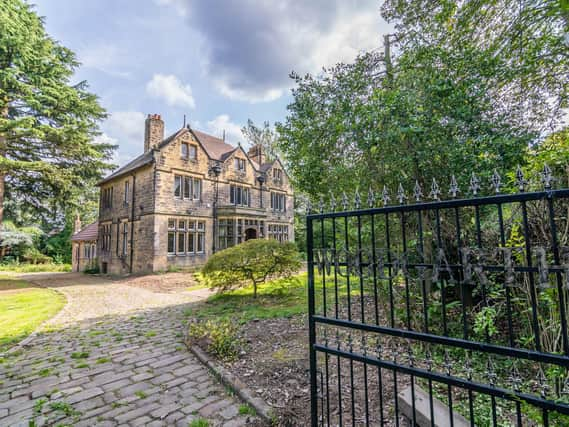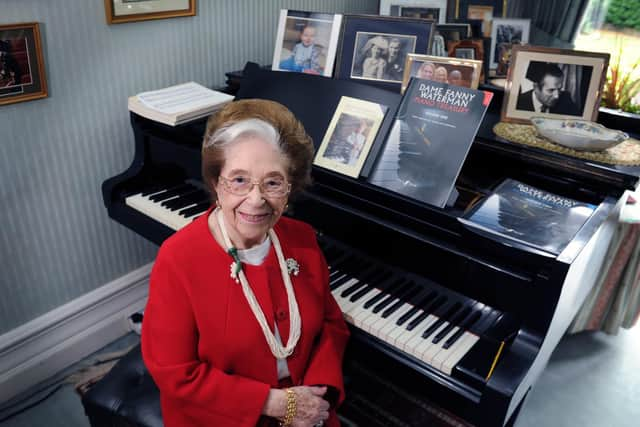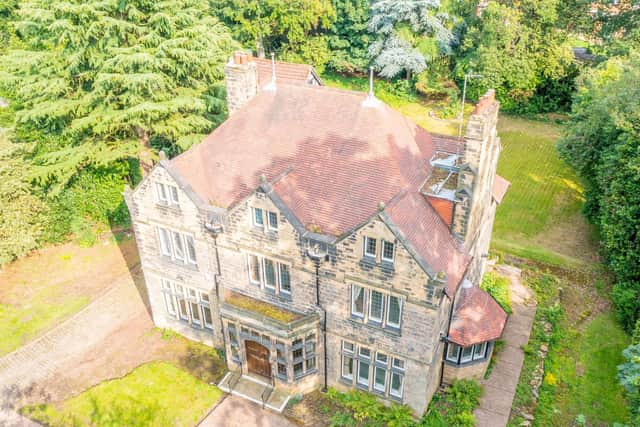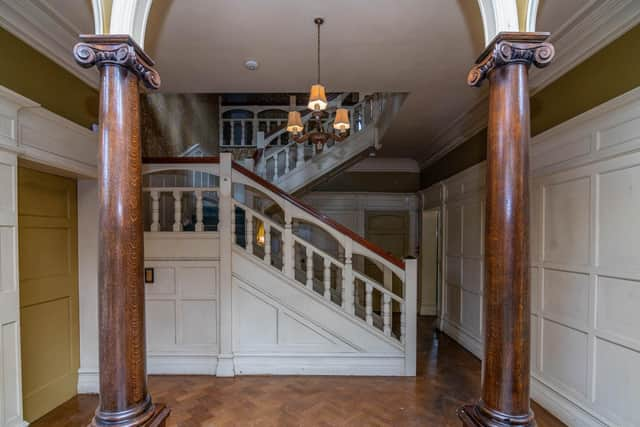The late Dame Fanny Waterman's former home in Leeds is up for sale again


The magnificent Leeds home that belonged to the late Dame Fanny Waterman is on the market once more. Dame Fanny, a Yorkshire musical legend, sold her beloved Woodgarth in Oakwood, near Roundhay, last year after moving to a retirement home in Ilkley. She passed away at the age of 100 soon after, in December 2020, when tributes to her remarkable life and legacy flooded in.
Woodgarth's new owner has put the property back on the market for offers over £1.35m with Monroe Estate Agents. Jordan Yorath says: "The house could be modernised to create a unique family home or entirely redeveloped to create multiple dwellings."
Advertisement
Hide AdAdvertisement
Hide AdDame Fanny and her husband Dr Geoffrey de Keyser bought the Victorian property in 1966 and while they loved the lavish period features and the large garden, the main seling point was the 37ft by 17ft drawing room on the basis that it had space for two Steinway grand pianos.


Woodgarth was where she gave piano lessons, co-founded the world-renowned Leeds International Pianoforte Competition and co-devised the best-selling Me and My Piano books. It also hosted Dame Fanny's musical soirees, which attracted the rich and famous. Don Revie was a regular visitor to the house, as was Alan Bennett, while her Steinways were played by luminaries including Lang Lang. Sir Benjamin Britten also played at Woodgarth when he stayed there with tenor Peter Pears.
Many of her soirees were covertly aimed at raising money for the world-renowned triennial piano competition, which she started in 1961 with Roslyn Lyons and with her friend and fellow pianist Marion, then Countess of Harewood.It was aimed at giving young, gifted pianists a chance to shine and has attracted the greatest talents.
Dame Fanny was herself a brilliant pianist who won a scholarship to the Royal College of Music in 1941 but she used her skill to teach and to build “The Leeds” into one of the world’s most respected international music competitions. She was founder chairman, artistic director and chief fundraiser until she retired at the age 95.
Advertisement
Hide AdAdvertisement
Hide AdHer son Robert said: “She jokingly referred to herself as Field Marshall Fanny’, all 4ft 10ins of her. As a person and as a mother she was dynamic and always immaculately turned out.”


She was also known as Yorkshire’s answer to Gertrude Stein, whose Paris salon featured the foremost artists and writers of the early 20th century. Dame Fanny was adept at inviting the right people and used her musical ability, intellect and her charm to help raise much of the £1m needed to stage the competition, though she never asked for money. She just let it be known that the event relied on donations
Woodgarth, which has eight bedrooms, was built by a Swiss tycoon in 1898. He sold it to well-known retailers, the Schofield family, in the 1890s. The property still has many period features intact. The decor Dame Fanny chose was partly inspired by Harewood House, which she visited often to take lunch with Marion and her mother-in-law Princess Mary.
The property sits in grounds of 0.7acres and a reception hallway with original panelling, delft racks, parquet floors, arched detailing and staircase inspired by the Arts and Crafts movement.
Advertisement
Hide AdAdvertisement
Hide AdThere is a drawing room, formal dining room, a breakfast kitchen, cloakroom, utility room, a side entrance lobby, a w.c., garden room and large cellars. On the first floor is a galleried landing, four bedrooms, house bathroom and separate shower room. A separate staircase leads onto the second floor with up to four further bedrooms and a bathroom.


The grounds are very private and benefit from a vast array of mature trees and hedges. There is also a detached double garage and stable block which, subject to the necessary permissions, could be redeveloped to provide ancillary accommodation.
Comment Guidelines
National World encourages reader discussion on our stories. User feedback, insights and back-and-forth exchanges add a rich layer of context to reporting. Please review our Community Guidelines before commenting.